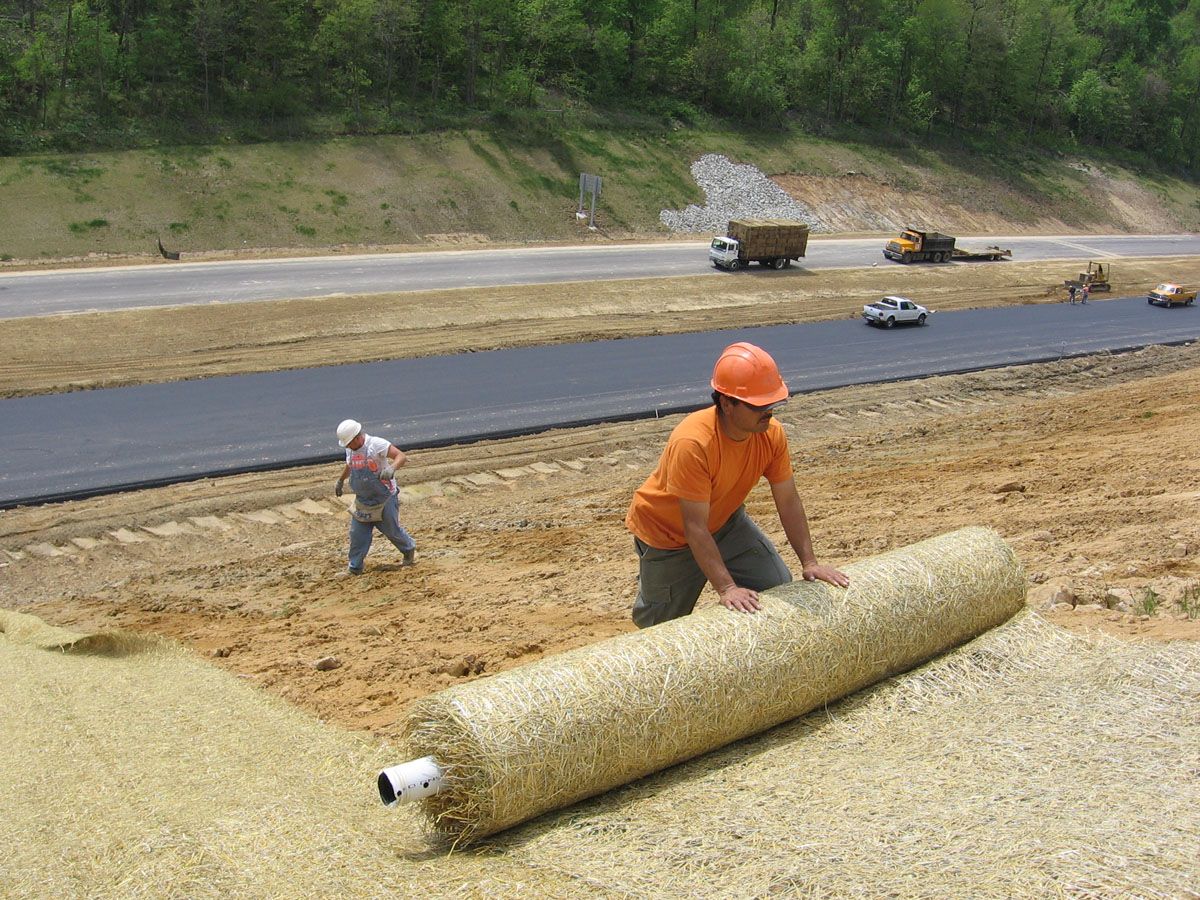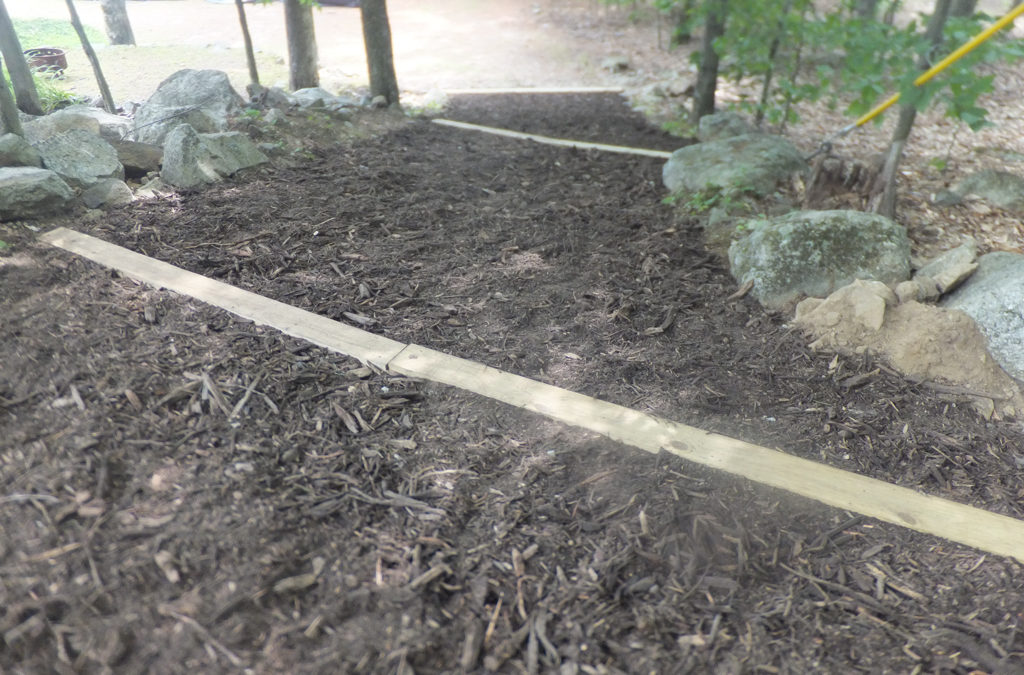Securing Your Website with Memphis Erosion Control Solutions silt fences
Wiki Article
Effective Erosion Control Techniques for Lasting Land Monitoring
Are you looking for ways to effectively take care of erosion on your land? Look no further! This post will certainly provide you with important information on the importance of disintegration control in lasting land monitoring. Discover the various kinds of erosion and their influence on your land, as well as natural approaches to regulate erosion. Discover just how to implement reliable erosion control actions and guarantee correct surveillance and maintenance. Beginning doing something about it today to protect and keep your important land.Value of Disintegration Control in Sustainable Land Monitoring
Due to the fact that it assists stop dirt degradation and loss,Disintegration control is important for sustainable land monitoring. By executing reliable disintegration control techniques, you can guarantee the long-lasting health and wellness and efficiency of your land. Without appropriate disintegration control measures, dirt erosion can take place, leading to the loss of important topsoil that is abundant in nutrients essential for plant development.Due to the fact that it assists to maintain soil fertility,One of the main reasons disintegration control is important is. When dirt wears down, it eliminates the raw material and nutrients that plants require to flourish. This can result in decreased crop returns and reduced efficiency of the land. Furthermore, erosion can cause sedimentation in neighboring water bodies, which can adversely influence marine ecosystems.
One more key benefit of disintegration control is the avoidance of land deterioration. Erosion can trigger the loss of important topsoil, which takes years to develop naturally. This loss of topsoil can lead to ineffective and barren land, making it tough for plants to grow and for environments to flourish. By carrying out disintegration control methods such as terracing, contour plowing, and using cover plants, you can assist stop land degradation and keep the health of your land.

Kinds Of Disintegration and Their Effect On Land
Understanding the various kinds of erosion and exactly how they affect the land can aid you carry out better land administration practices. Disintegration is the procedure through which dirt, rocks, and other products are slowly worn away and transferred by all-natural forces such as water, ice, and wind. There are 4 primary sorts of disintegration: sheet erosion, rill disintegration, gully erosion, and mass movement erosion.Sheet disintegration occurs when a slim layer of dirt is gotten rid of uniformly from the surface area of the land. Rill erosion, on the other hand, happens when small channels or rivulets are created on the land due to the flow of water.
When larger networks or gullies are formed due to the continual flow of water,Gully disintegration is much more severe and takes place. This kind of disintegration can create significant damages to the land, bring about loss of topsoil and greenery. Lastly, mass activity disintegration refers to the activity of big quantities of dirt and rocks downhill due to the force of gravity. This can take place in the type of landslides or slumping.
Comprehending these different sorts of erosion and their influence on the land is essential for efficient land management. By applying erosion control methods such as terracing, shape plowing, and reforestation, you can lessen erosion and maintain the honesty of the land. Furthermore, practicing excellent land administration strategies like proper crop rotation, preserving ground cover, and utilizing sediment control measures can even more help in protecting against erosion.
All-natural Disintegration Control Methods for Sustainable Land Monitoring
By executing natural disintegration control approaches, you can effectively protect the integrity and manage of your land. One effective approach is landscape associates the usage of plants, such as lawns and plants, to support soil and stop disintegration. Growing indigenous varieties can aid increase origin density and bind the soil together, decreasing the danger of disintegration triggered by hefty rains or wind (Memphis Erosion Control Solutions hydroseeding). In addition, mulching is another all-natural method that can aid manage disintegration. By using a layer of organic compost, such as timber chips or straw, you can secure the dirt from the influence of raindrops, decreasing soil compaction and runoff. One more all-natural erosion control method is contouring the land. By creating shape lines or terraces on slopes, you can slow down the flow of water and allow it to permeate the dirt, minimizing disintegration. In locations where erosion is a significant concern, setting up disintegration control coverings or mats can be beneficial. These mats are made from eco-friendly products and help stabilize the soil till vegetation is established. In general, by making use of these all-natural erosion control methods, you can successfully handle and protect your land from disintegration, ensuring its lasting sustainability.Implementing Efficient Disintegration Control Steps

To successfully take care of and safeguard your land from erosion, you should think about carrying out proven approaches that can aid alleviate the danger. One such method is the use of disintegration control coverings. These blankets, made from natural fibers or artificial products, are positioned on the soil surface area to stabilize it and prevent erosion. They help maintain moisture, minimize sediment drainage, and promote the development of vegetation. One more effective technique is using terracing. Terracing includes developing level systems on sloping land, which aids to decrease overflow and protect against disintegration. It also enables for the cultivation of crops on the terraced slopes. Furthermore, planting plant life is a vital step in erosion control. Bushes, turfs, and trees have extensive origin systems that bind the soil with each other, lowering disintegration triggered by wind and water. In addition, mounting sediment control steps such as silt fences and sediment fish ponds can aid trap sediment and stop it from getting in neighboring water bodies. These procedures are specifically important during construction activities. By implementing these verified erosion control techniques, you can efficiently shield your land and reduce the threat of erosion and its harmful results.
Surveillance and Maintenance of Disintegration Control Techniques
When surveillance and maintaining disintegration control measures, it is essential to routinely check the erosion control blankets, terraces, blog greenery, and debris control steps to ensure they are functioning properly and successfully preventing disintegration (silt fences). By conducting regular inspections, you can determine any kind of concerns or deficiencies in the erosion control techniques and take necessary actions to remedy them
Begin by inspecting the disintegration control coverings. Ensure they are safely secured and cover the designated areas with no spaces. Look for signs of damage or wear, such as tears or exposed dirt. Change or repair any kind of broken coverings without delay to keep their efficiency.
Following, evaluate the terraces. Check for indications of disintegration, such as debris build-up or unequal surface areas. Make certain that the terraces are appropriately created and maintained to divert water flow and reduce disintegration. Clear any type of built up debris to maintain their functionality.
Review the plants in the disintegration control area. Proper greenery coverage helps stabilize the dirt and stop erosion.
Last but not least, evaluate the sediment control procedures, such as sediment containers or debris fencings. See to it they are properly installed and functioning as planned. Eliminate any kind of accumulated sediment and make certain that the controls are correctly maintained.
Routine monitoring and maintenance of erosion control procedures are crucial for their long-term efficiency in stopping disintegration and keeping lasting land administration practices.
Final Thought
In conclusion, you need to prioritize erosion control for sustainable land monitoring. By recognizing the different types of erosion and their impact on the land, you can implement reliable all-natural erosion control approaches.Discover the various types of erosion and their effect on your land, as well as natural methods to regulate erosion. There are 4 major kinds of erosion: sheet disintegration, rill disintegration, gully erosion, and mass movement disintegration.
By applying erosion control techniques such as terracing, shape plowing, and reforestation, you can lessen disintegration and protect the stability of the land (Memphis Erosion Control Solutions excavation). Overall, by using these natural erosion control techniques, you can properly take care of and shield your land from disintegration, guaranteeing its long-term sustainability
By understanding helpful resources the various types of disintegration and their influence on the land, you can implement reliable natural disintegration control techniques.
Report this wiki page